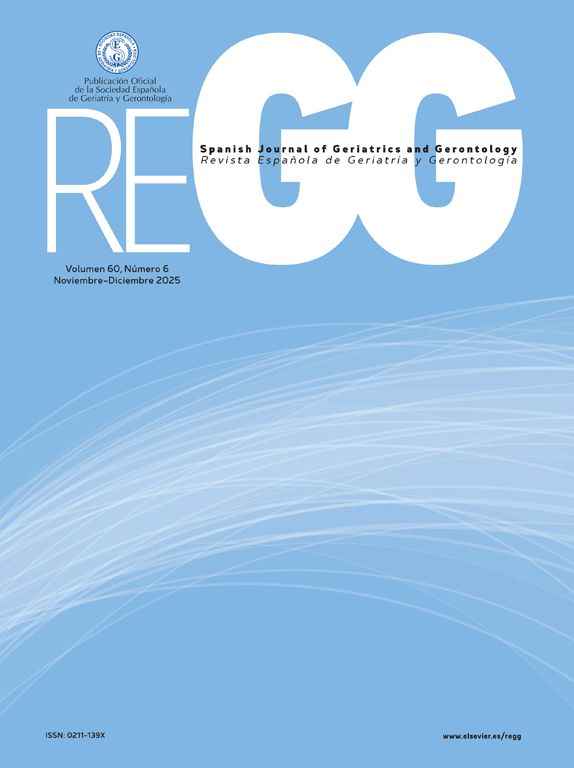Originales. Trabajos de investigación que aportan nuevos resultados en las áreas de interés de la Revista. Los manuscritos deberán estructurarse en los apartados: La extensión recomendada es de 3.000-3.500 palabras (aparte se incluirá un resumen estructurado y abstract de 250 palabras, un máximo de 6 tablas y figuras, hasta un máximo de 40 referencias bibliográficas, y entre 3 y 5 palabras clave y keywords). Podrá incluirse hasta un máximo de 6 autores. En el caso de estudios multicéntricos el número de autores podría aumentar hasta 9.
Para la publicación de ensayos clínicos controlados se recomienda seguir los criterios CONSORT, disponibles en: http://www.consort-statement.org
Originales breves. Trabajos de investigación que por sus características especiales (series con número reducido de casos, estudios epidemiológicos descriptivos, trabajos con objetivos y resultados muy concretos) pueden publicarse de forma abreviada. Deberán estructurarse en los apartados. Su extensión no superará las 1.500 palabras (aparte se incluirá un resumen estructurado y abstract de 250 palabras, 2 figuras y/o tablas como máximo, entre 3 y 5 palabras clave y keywords y hasta un máximo de 15 referencias bibliográficas. Podrá incluirse hasta un máximo de 6 autores.
Proyectos de investigación. Esta sección acogerá la presentación de proyectos de investigación bien diseñados y que potencialmente puedan generar diversas publicaciones en revistas de prestigio. Se priorizará aquellos estudios que hayan resultado financiados en convocatorias públicas cuyo sistema de selección presente una calidad contrastada, tales como las de la ‘‘Acción Estratégica en Salud’’ del Instituto de Salud Carlos III, o las del Programa Marco de la Comisión. En general constarán de una sección de introducción sobre los motivos que justifican la idoneidad de realizar el trabajo que deberá finalizar con la descripción del objetivo del estudio, una completa sección de métodos en que se expliquen todos los detalles del diseño del estudio y del análisis estadístico que se va a realizar, y una breve discusión de los posibles resultados. Europea. Deberán adaptarse en extensión y formato a los artículos de la sección ‘‘original’’ o de ‘‘original breve’’. Se acompañará de un resumen estructurado y abstract de 250 palabras, entre 3 y 6 palabras clave y keywords además de una completa revisión bibliográfica (máximo de 40 citas). Se incluirán El número máximo de autores será 4.
Revisiones. Puestas al día de un problema de relevancia biológica, clínica o psicosocial mediante la aportación de la necesaria bibliografía para este cometido. Si bien los trabajos de revisión serán preferiblemente encomendados por el Editor o Coeditores de la Revista, cabe la posibilidad de su espontánea aportación. La extensión recomendada es recomendada es de 3.000-3.500 palabras (sin incluir resumen, tablas, figuras y hasta un máximo de 60 referencias bibliográficas) El número máximo de autores será 4. El resumen no estructurado de los trabajos de esta sección deberá ser lo más escueto posible (de unas 150 palabras), pero fluido en su lectura y concluyente del tema en cuestión. No obstante, con el fin de evitar esfuerzos innecesarios, conviene llegar a un acuerdo previamente sobre el tema y la extensión del manuscrito con el Editor o Coeditor competente.
Notas clínicas. En esta sección se aceptarán series de casos o agrupaciones de casos clínicos relevantes e interrelacionados, adecuadamente explicados y argumentados. La presentación de casos clínicos aislados, debieran ser remitidos como ‘‘cartas científicas’’. Su extensión no superará las 1.500 palabras, 2 figuras y/o tablas y un máximo de 10 referencias bibliográficas. Se aportará un breve resumen no estructurado (unas 100 palabras), que resalte la particularidad de la nota. El número máximo de autores será 4.
Caso Clinico. Se aceptarán casos clínicos aislados, adecuadamente argumentados y explicados. Los informes de casos deben ser de condiciones que proporcionen una nueva percepción, describan trastornos infrecuentes, presenten peculiaridades de presentación o manejo clínicos, o nuevas aproximaciones diagnósticas o terapéuticas. La extensión no sobrepasará las 750 palabras, 10 citas bibliográficas y 1 tabla o figura. El máximo de autores será 4.
Cartas científicas. Esta sección recoje trabajos que contienen nuevos estudios que pueden exponerse de forma abreviada, y que no tengan la suficienterelevancia para ser considerados como "Originales" u "Originales Breves". La extensión no sobrepasará las 750 palabras, 10 citas bibliográficas y 1 tabla o figura. El máximo de autores será 4.
Cartas al Editor. En esta sección los lectores pueden expresar su opinión argumentada, conforme o disconforme, de una publicación reciente, así como sobre un tema que consideren importante comentar por su actualidad. Con esta sección se pretende fomentar y estimular el coloquio y la discusión entre los profesionales lectores de la Revista. Las aportaciones deben ser precisas y convenientemente argumentadas, preferentemente con citas bibliográficas en un número no superior a 10. La extensión de la carta no sobrepasará las 750 palabras, y se dará preferencia para la publicación a las más concisas y de mayor brevedad y claridad. El número máximo de autores será 4. La Revista se reserva el derecho de acortar el texto de la carta, ya sea por haber sobrepasado la extensión establecida o por reiteraciones que afectan a la fluidez de su lectura.
Editoriales y Puntos de vista. Son 2 secciones que ofrece la Revista para la colaboración externa. Regularmente se trata de trabajos solicitados directamente a expertos por los responsables de la edición, aunque no se excluye la aportación espontánea, para lo que conviene establecer un previo acuerdo.





